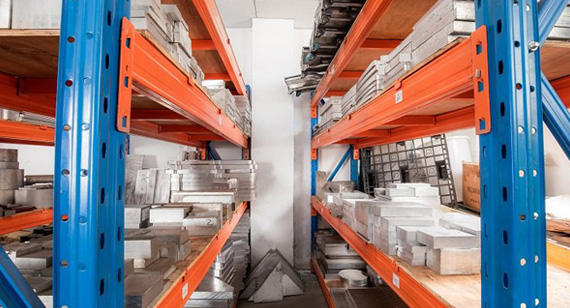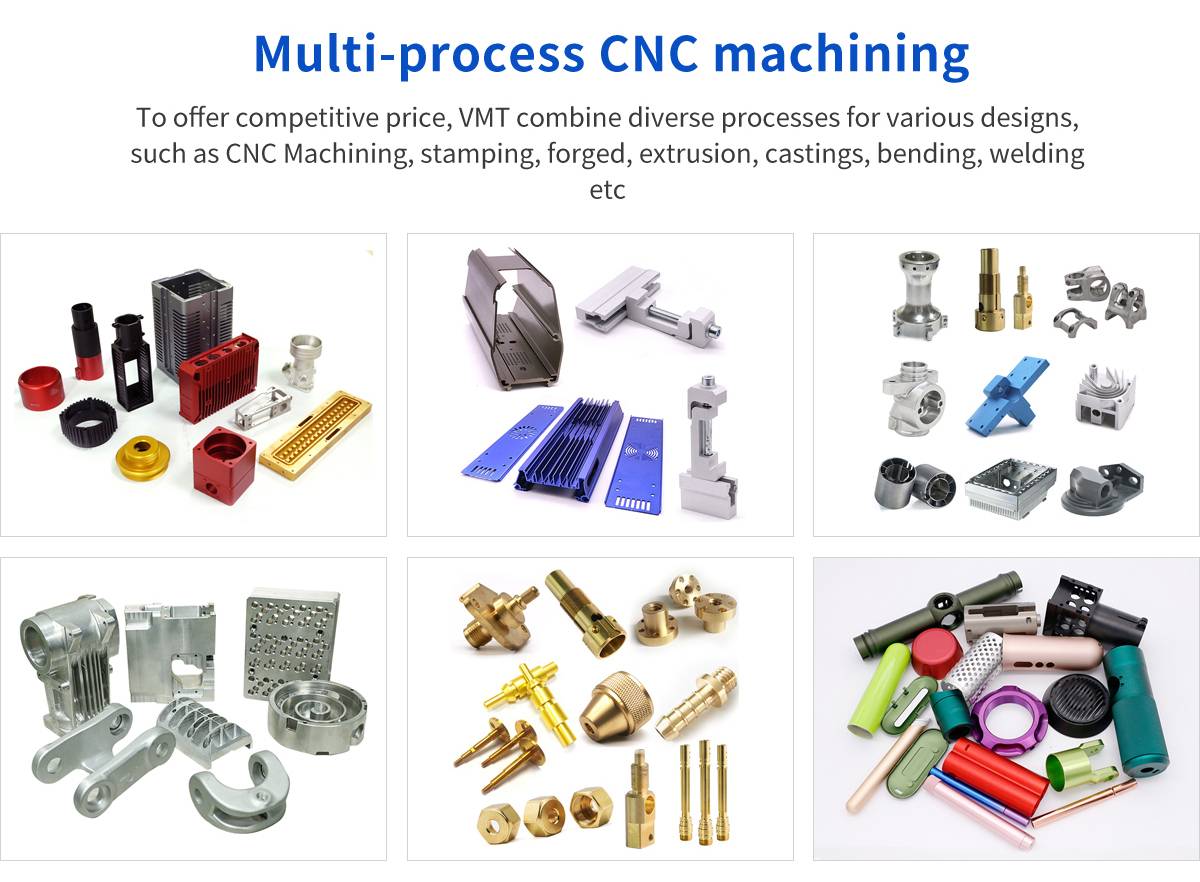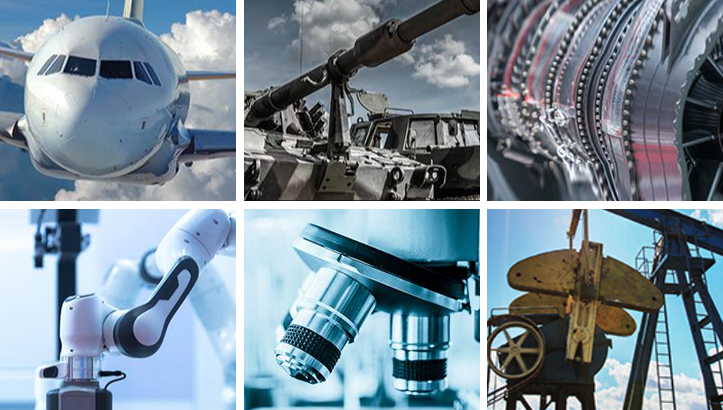15 years one-stop China custom CNC machining parts factory

Hey there I’m VMT Sam!
With 25 years of CNC machining experience we are committed to helping clients overcome 10000 complex part-processing challenges all to contribute to a better life through intelligent manufacturing. Contact us now
 173 |
Published by VMT at Jun 24 2024
173 |
Published by VMT at Jun 24 2024
Introduction
In the field of CNC machining, choosing the right material is crucial for the success of a project. High-quality steel and aluminum, as two common metal materials, each have unique physical and chemical properties suitable for different applications. This article will provide a detailed comparison of high-quality steel and aluminum across multiple aspects to help readers make informed decisions for their CNC machining projects.

1. Differences Between Aluminum and Steel
High-quality steel is known for its high strength, hardness, and toughness, making it ideal for applications that require heavy load-bearing and impact resistance. Aluminum, on the other hand, is renowned for its light weight, corrosion resistance, excellent electrical and thermal conductivity, and is particularly suited for applications that need weight reduction. The significant differences in their physical, chemical, and mechanical properties determine their respective applications and advantages in various fields.
2. Material Functions
High-quality steel is characterized by its high strength, good toughness, and wear resistance, making it suitable for heavy-duty and impact-resistant applications. Aluminum stands out for its lightweight, corrosion resistance, and excellent electrical and thermal conductivity. In CNC machining projects, high-quality steel is often used to manufacture structural components, mechanical parts, and tools due to its superior mechanical properties. Aluminum, with its light weight and ease of processing, is commonly used in aerospace, automotive, construction, and electronics industries.

3. Composition and Alloy Characteristics
Stainless steel mainly consists of iron, chromium, nickel, and other elements, and its performance is adjusted by adding different alloying elements. Stainless steel has excellent corrosion resistance and maintains stable performance in various corrosive environments. Aluminum primarily consists of aluminum and forms various alloys by adding elements such as copper, magnesium, and zinc to meet the needs of different fields.
4. Corrosion Resistance
Stainless steel exhibits outstanding corrosion resistance, especially those grades with sufficient chromium content (such as 304 and 316), ensuring a long service life in corrosive media like acids, alkalis, and salts. Although aluminum has strong corrosion resistance in the presence of atmospheric oxygen, its resistance is relatively weaker in other corrosive gases and liquids.
5. Electrical Conductivity
Aluminum has excellent electrical conductivity, second only to silver and copper, making it widely used in electrical and electronic fields. Stainless steel has relatively poor electrical conductivity and is typically not used as a conductive material. In CNC machining projects, if electrical conductivity is a requirement, aluminum is the better choice.
6. Thermal Conductivity and Thermal Coefficient
Aluminum has superior thermal conductivity, making it suitable for manufacturing heat exchangers and heat sinks. Stainless steel has relatively poor thermal conductivity but better thermal stability, making it suitable for high-temperature environments. In CNC machining projects, aluminum is the preferred choice for making heat dissipation equipment or parts that need to withstand high temperatures.
7. Melting Point
Steel has a higher melting point, typically around 1535°C, while aluminum has a lower melting point of about 660°C. This means aluminum is more likely to melt in high-temperature environments. Therefore, when selecting materials for CNC machining, the working temperature and thermal stability requirements of the project must be considered.
8. Material Hardness
Steel usually has a higher hardness than aluminum, making it more wear-resistant and durable in heavy-load and impact conditions. Aluminum has relatively lower hardness but good toughness and ductility, performing well in environments with high impact or vibration. The choice of material for CNC machining should be based on the working environment and load conditions of the parts.
9. Weight
Aluminum has a much lower density than steel, approximately one-third of steel's density. This makes aluminum products lighter and suitable for weight-sensitive applications. In CNC machining projects, aluminum is the better choice for manufacturing lightweight parts or equipment.
10. Durability
High-quality steel has excellent durability and fatigue resistance, maintaining stable performance over long-term use. While aluminum has good corrosion resistance and toughness, it may not be as durable as steel in some heavy-load and impact environments. The choice of material for CNC machining should be based on the required durability and service life of the parts.
11. Machinability
High-quality steel and aluminum have distinct characteristics in terms of machinability. Due to its high strength and hardness, stainless steel may require higher cutting forces and temperatures during processing. However, with the right cutting tools and parameters, the machining difficulty can be reduced, and efficiency improved. Aluminum, being lightweight and easy to machine, allows for rapid and precise cutting.

12. Stainless Steel vs. Aluminum: Cost
From a cost perspective, aluminum is relatively more expensive due to the complexity of obtaining and processing aluminum resources. However, aluminum has a high recycling rate, making it more environmentally friendly. Steel has a relatively lower production cost and offers good quality and cost stability. The choice of material for CNC machining should consider the project's budget and environmental requirements.
13. Industry Applications
Stainless steel is widely used in chemical, medical, food, shipbuilding, and construction fields due to its excellent corrosion resistance and mechanical properties. In these industries, stainless steel is commonly used to manufacture corrosion-resistant pipes, containers, equipment, surgical instruments, and kitchenware.
Aluminum, due to its light weight, corrosion resistance, and excellent electrical and thermal conductivity, is widely used in aerospace, automotive, construction, electronics, and packaging fields. For instance, in aerospace, aluminum is used to make structural components of aircraft and rockets; in the automotive industry, aluminum is used for car bodies and engines to achieve lightweight; in construction, aluminum is used for windows and curtain walls; and in electronics, aluminum is used for heat sinks and circuit boards.

14. Steel or Aluminum: Easier to Machine?
In CNC machining, the ease of machining steel and aluminum depends on the specific material type, machining requirements, and equipment. Generally, aluminum is easier to machine due to its lightweight and ease of cutting, allowing for rapid and precise processing. Although stainless steel requires higher cutting forces and temperatures due to its high strength and hardness, selecting suitable cutting tools and parameters can also achieve efficient machining.
15. Which Is More Suitable for Your CNC Machining Project: Stainless Steel or Aluminum?
Choosing between stainless steel and aluminum for a CNC machining project requires considering multiple factors, including the working environment, load conditions, weight requirements, corrosion resistance, electrical and thermal conductivity, cost budget, and environmental impact. Here are some recommendations:
If the project requires heavy load-bearing and impact resistance, or good wear resistance and durability, stainless steel is the better choice.
If the project requires weight reduction, or good corrosion resistance and electrical conductivity, aluminum is the better choice.
For budget considerations, the price of stainless steel and aluminum may vary, requiring a balance based on the actual situation.
For environmental considerations, aluminum, with its high recycling rate, might be more advantageous.
In conclusion, selecting CNC machining materials requires a comprehensive evaluation of the project's specific needs and requirements, ensuring the successful implementation of the project.
Conclusion
Through a detailed comparison of high-quality steel and aluminum, we can see that these two materials have significant differences in various aspects. Stainless steel, known for its high strength, corrosion resistance, and excellent mechanical properties, is suitable for heavy load-bearing and impact-resistant applications. Aluminum, with its lightweight, corrosion resistance, and excellent electrical and thermal conductivity, finds wide application in various fields. When selecting CNC machining materials, it is essential to comprehensively evaluate the project's specific needs and requirements to choose the most suitable material for ensuring successful project implementation.
Ready To Start Your Next Project?
Get Instant Quote

Request a Free Quote
Send us a message if you have any questions or request a quote. We will get back to you ASAP!